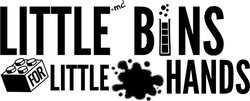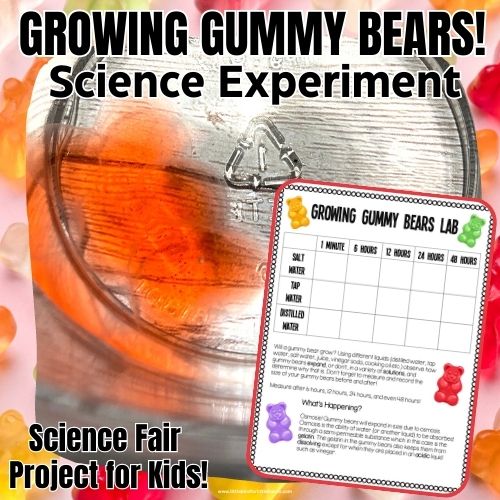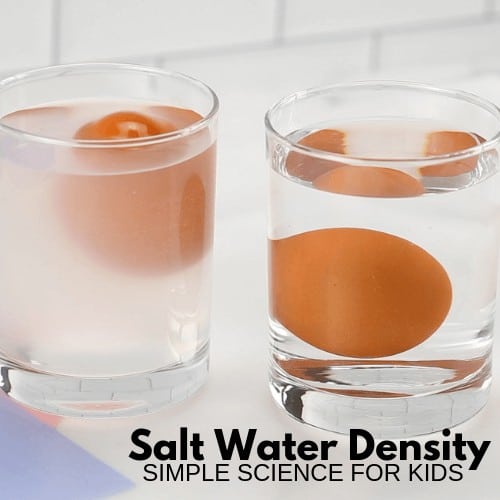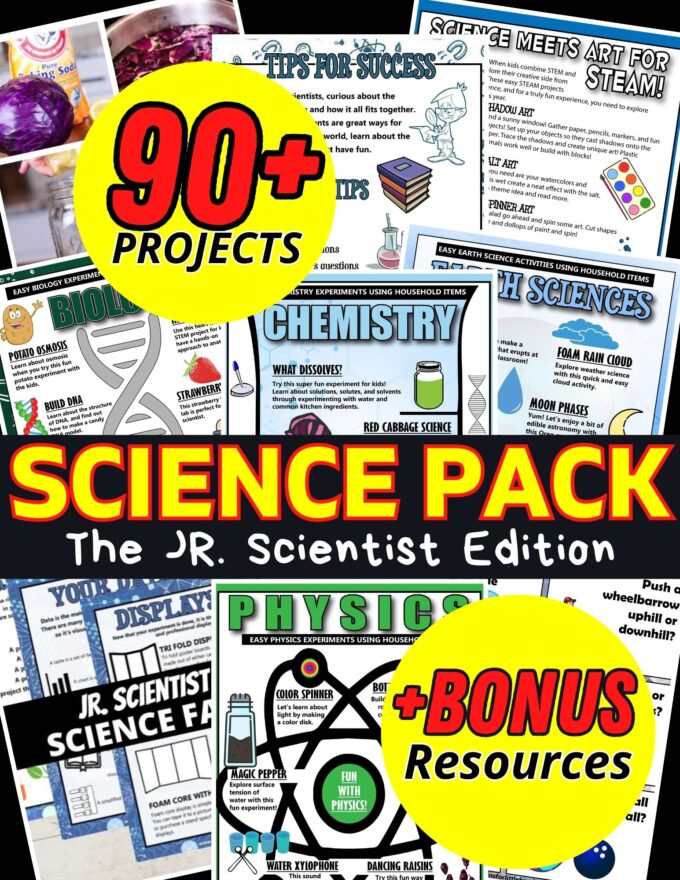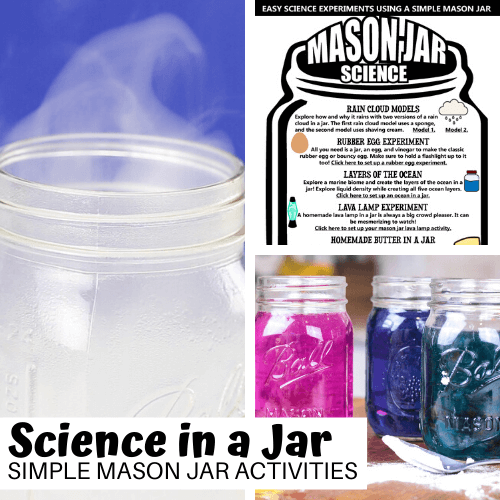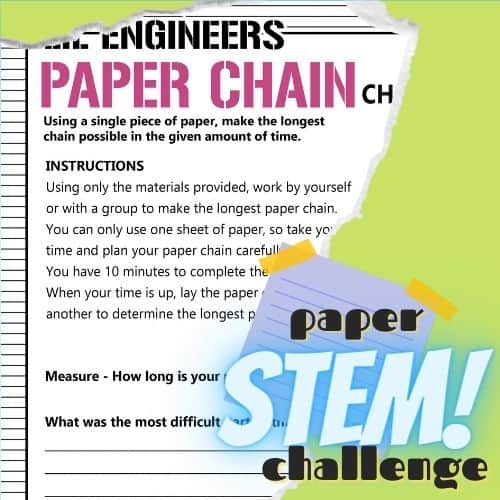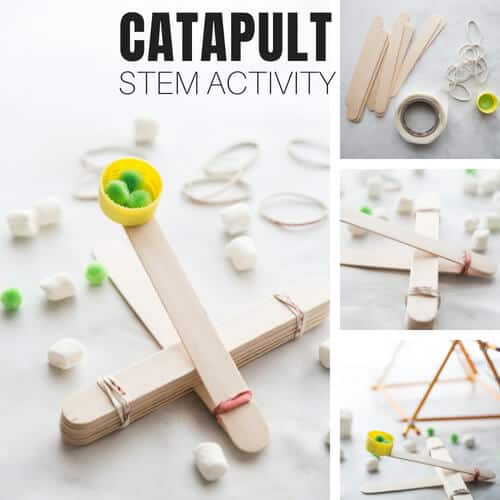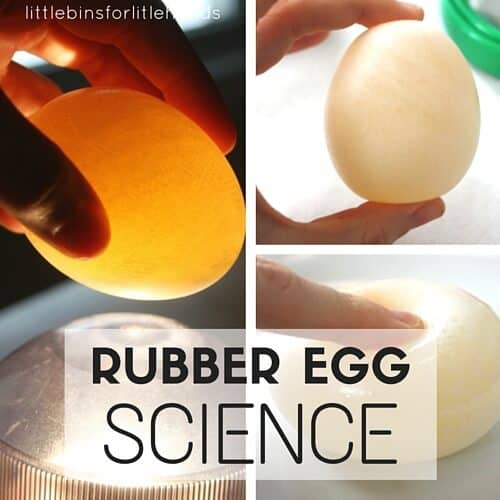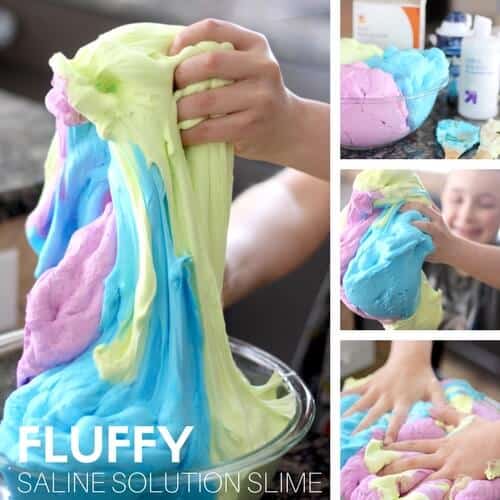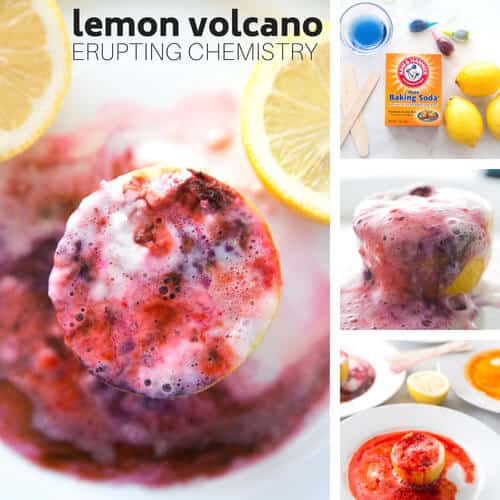When the dreaded paperwork comes home from your kiddo’s school outlining the upcoming science fair projects, do you break out into a sweat and begin to stress out over picking the perfect science project ideas to outdo all the rest? Maybe you rush to the craft or building supply store and scoop up all the materials to get started when your kiddo goes to bed that night. If you said “Yes, that’s me,” I beg you to STOP!
Keep Science Fair Season Simple

Tips from an Early Elementary Science Teacher!
Jacki is an early elementary science teacher and knows all the tips and tricks, so I asked her to share her thoughts on science project ideas!
“I want to help you remove the stress associated with this activity, honor the tradition of the science fair experience, and proceed in a way that is helpful to your student without doing the project for them.”
Using the Scientific Method
The whole purpose of the science fair is to help students demonstrate their understanding of the scientific method. The scientific method is based on the idea that students will think of a scientific topic and subsequent questions they are curious about and want to explore.
They will then work to design an experiment around this question and observe what happens during the experiment before drawing conclusions to answer their original question.
This is similar to the STEAM or Engineering Design Process that many states and districts are moving towards under the Next Generation Science Standards.
Remember, this whole process is supposed to be carried out by your child, with SOME assistance from you. As a teacher, I can tell you 10 times out of 10, and I would rather see work that is truly student-created, messy, misspelled, and REAL vs. the Pinterest-perfect creation that the mom down the street just posted on her Instagram.
So here are my suggestions to get through the science fair project while keeping it simple.
FREE Science Fair Project Pack!
This simple packet of information will help your kiddos get started with their science fair project.

Science Fair Checklist
Pick a project that your child has expressed interest in. THIS IS THE MOST IMPORTANT ADVICE I CAN GIVE! Engaging your child in this process will be much easier when they are the driving force behind it.
If they want to do something with candy, let them pick an experiment, like the skittle dissolving or gummy bear growing experiment.
If they’re interested in plants, maybe suggest they try the classic carnation in colored water or the seed germination jar project.
Besides that, KEEP IT SIMPLE! Do not choose something you know is unrealistic for your child to do based on age, attention span, family schedule, etc.
Most of the time, the best science fair projects come from the most basic ideas!

1. Ask a Question and Pick a Topic
TIP 1: Generate a list of as many questions as you can think of that relate to the topic before settling on the exact one you will explore through the project. The more, the merrier. Then pick the most specific one and will have clear-cut outcomes.
2. Come Up with a Test
TIP 2: Help your child develop a way to test their questions realistically. Climbing on the roof to drop things off is probably unrealistic based on safety concerns alone.
Suggest tests that can be completed in the house or driveway, that require minimal materials, and that will not take over your lives for an extended period of time.
Short and sweet, small and simple.
3. Understanding Variables
A scientific experiment generally includes a dependent and independent variable! Not sure how to go about deciding which one is which? We can help! Learn all about science variables here.
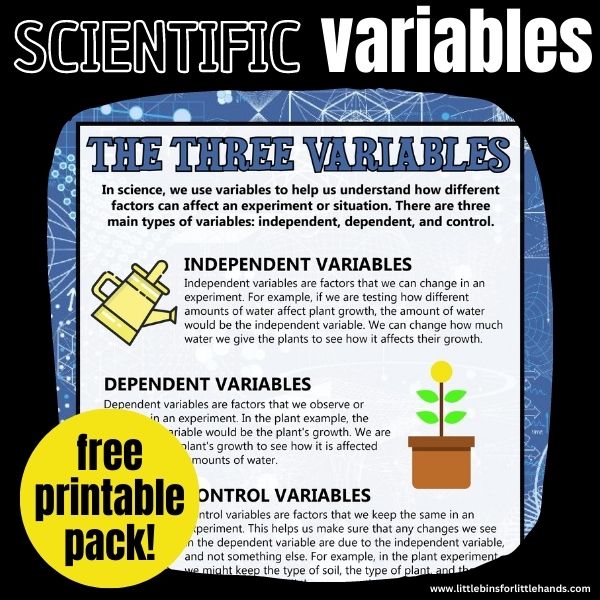
4. Outline the Process
TIP 3: During the experiment implementation, guide your child through the steps they’ve determined are necessary to test their theories and help them record the process in a way that will make the written component at the end easier.
This organization up front will make a world of difference come a few weeks from now when it’s time to create a final draft of their report.
Maybe you help your child jot down a sentence or two daily relating to their experiment. Or try recording short videos of your child explaining their experiment as they go through the steps.
This can help take some of the tears out of the writing component that will come at the end of the project, as they will have evidence, in their own words of the steps taken, which can then be easily written down.
5. Create a Science Fair Project Board
TIP 4: This suggestion may be the most difficult pill to swallow, but I’ll say it anyway: Allow your child to create the presentation board him/herself!
Provide the materials needed (paper, markers, double-sided tape, glue stick, etc.) and help them plan the visuals, but then let them have at it. A child’s project should look like a child’s project. A second-grader should never be going to school with something that looks ready for the high school science fair!
I know as a control freak how hard that is to allow but trust me, it’s all about the ownership and the pride they will be able to take in their work, knowing it’s, in fact, THEIR WORK!
If you feel guilty for not helping, offer to glue things down where your kiddo tells you to put them or write things out for them in pencil that they can trace in marker!
Working together can be a fun experience, don’t do it FOR them, I beg you!
Want to learn more about what to put on a science fair board? Check out our science fair board making ideas!

Help your kiddos gain various skills through participating in a science fair, such as communication, critical thinking, time management, peer interaction, and self-confidence!
Science Fair Projects to Try
So now that you have a better idea of how to approach this seemingly daunting task, which hopefully now feels more simplified, I’d like to offer you a few suggestions of the “tried and true” experiments that will engage your students and help you get it done without doing you in.
Paper Airplane Tossing
Fold various paper airplanes and record how far each one flies over a series of tosses. Which one flies the farthest? Why is that design the most efficient? Check out some airplane templates here.
Growing Gummy Bears
Using different liquids (water, salt water, juice, soda, etc.), observe how gummy bears expand or don’t in various solutions and determine why that is. Don’t forget to measure and record the size of your gummy bears before and after! Measure after 12 hours, 24 hours, and even 48 hours!
Grab this free gummy bear lab here!
What’s Happening?
Osmosis! Gummy bears will expand in size due to osmosis. What is osmosis? Osmosis is the ability of water (or another liquid) to be absorbed through a semi-permeable substance, which is gelatin. The gelatin in the gummy bears also keeps them from dissolving except when placed in an acidic liquid such as vinegar.
Floating Eggs
This experiment explores how to make an egg float using salt water. Students can explore the amount of salt dissolved in water it will take to increase the buoyancy of the egg and cause it to rise to the top of the container. Think of the Great Salt Lake in Utah! What a great connection to make! See the floating egg experiment here.
Germ Busters Bread Mold Experiment
Using a few pieces of bread, some zip-top baggies, and two hands, discover what methods of washing hands are the most effective based on the amount of mold you grow! Will it be a hand sanitizer that works best? Traditional soap and water? Or maybe another nontraditional liquid you try will kill germs best!
Alternatively, you can check germy surfaces with the bread and place them in bags. We rubbed our bread on the iPad!

The Effects of Sugar on Teeth
While tasty, sugary drinks are not the best for us or our teeth. Using different beverages, like juices, sodas, coffee, tea, sports drinks, and eggs, we can determine which impacts our dental health most and which are not as bad as we think!
We used Coke, Gatorade, iced tea, orange juice, lemonade, and grape juice for our experiment!


Color Taste Test
Try this simple experiment with a few kiddos, or try it for a quick science fair project. This color taste experiment asks the question… Does Color Affect Taste? Grab the mini taste test pack here.
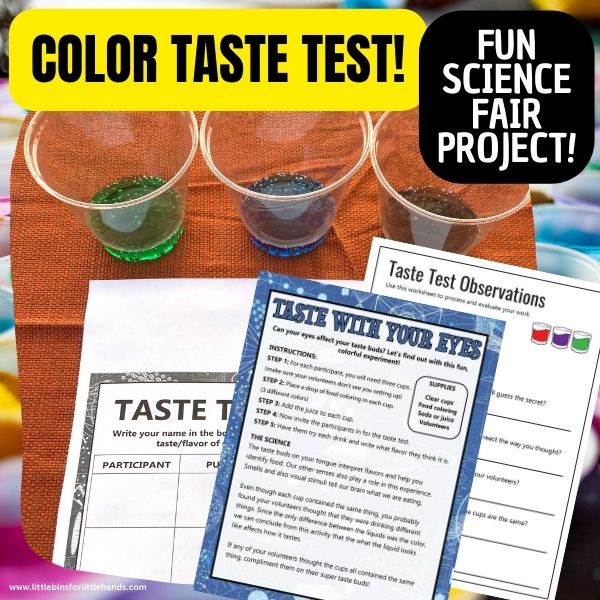
Science Investigation Conclusion
If you are ready to tackle a science investigation or science fair project, I’ve got you covered with the best teacher tips! Download these great tips and science project guide here!
Remember to keep the following in mind:
- Let the kids pick topics that interest them!
- Keep the scientific testing ideas safe and realistic!
- Make sure to stay on top of the observations and data!
- Let the kiddos put the presentation together. No Pinterest-perfect projects are needed!
The science project may not look perfect, but it will be their work.
Printable Science Projects Pack
Includes an expanded Science Fair Pack with experiments to use.
If you’re looking to grab all of our printable science projects in one convenient place plus exclusive worksheets and bonuses like a STEAM Project pack, our Science Project Pack is what you need! Over 300+ Pages!
- 90+ classic science activities with journal pages, supply lists, set up and process, and science information. NEW! Activity-specific observation pages!
- Best science practices posters and our original science method process folders for extra alternatives!
- Be a Collector activities pack introduces kids to the world of making collections through the eyes of a scientist. What will they collect first?
- Know the Words Science vocabulary pack includes flashcards, crosswords, and word searches that illuminate keywords in the experiments!
- My science journal writing prompts explore what it means to be a scientist!!
- Bonus STEAM Project Pack: Art meets science with doable projects!
- Bonus Quick Grab Packs for Biology, Earth Science, Chemistry, and Physics
